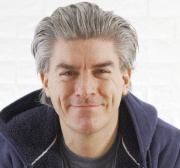Find resources
Resource search filters
Blog Post
Le Product Backlog est une liste ordonnée et évolutive de tous les travaux jugés nécessaires par le Product Owner pour créer, publier, maintenir et entretenir un produit.
5 from 1 rating
Blog Post
On today’s episode of YOUR DAILY SCRUM: What do we need to get started in Scrum?
5 from 1 rating
Webcast
The Product Owner in Scrum originally called the ‘agile product manager’ describes the responsibilities necessary to focus the team on delivering value. But for many Product Managers, the role causes confusion. Is the Product Owner owner someone different, is it an additional set of responsibilities...
0 from 0 ratings
Blog Post
Lorsque l’on débute un projet, c’est une initiative qui est lancée sur la base d’une idée. On espère cette idée bénéfique pour l’utilisateur et rentable pour l’entreprise.
5 from 1 rating
Blog Post
Os voy a comentar las fuentes más fiables que he encontrado para preparar el assessment PAL-EBM de Scrum.org
0 from 0 ratings
Blog Post
On today’s episode of YOUR DAILY SCRUM: What is the Right Sprint length in Scrum?
5 from 1 rating
Blog Post
For many people, the traditional project management methodologies (see PMI / PRINCE2) are the root of the problems that birthed Waterfall. I assert that this is the tip of the iceberg.
4.8 from 4 ratings
Blog Post
"Scrum is a lightweight framework that helps people, teams and organizations generate value through adaptive solutions for complex problems."
4.5 from 1 rating
Blog Post
On today’s episode of YOUR DAILY SCRUM: What does a Scrum Team do when they deliver early?
0 from 0 ratings
Blog Post
I sat, as an observing consultant, in my third Retrospective of the day. I noticed high energy and openness as the room's buzz showed me signs that this team was genuinely collaborative...
4 from 2 ratings
Blog Post
Se você é ou busca ser um Líder Ágil, você precisa conhecer essa técnica de como deixar seu time mais ágil.
4.5 from 1 rating
Blog Post
On today’s episode of YOUR DAILY SCRUM: Sprint Backlog vs Product Backlog - What's the Difference? A recent student asked Ryan and Todd to talk about the differences between a Sprint Backlog and a Product Backlog. It's an interesting question as these are two Scrum Artifacts that teams use to keep i...
0 from 0 ratings
Blog Post
Are you considering a new Scrum Master job? However, you are not sure that it is the right organization? Don’t worry; there are four steps of proactive research to identify suitable employers or clients for Scrum Masters and avoid disappointment later.
1 from 1 rating
Blog Post
On today’s episode of YOUR DAILY SCRUM: Who attends product backlog refinement in Scrum?
4.3 from 2 ratings
Blog Post
Unbelievable: the agile manifesto turns 20. Agile leadership has grown up. With it, the community around agile frameworks of all kind has grown over the years. The Scrum community is the most favorite one of them.
To celebrate this achievement, a community driven, worldwide festival goes online i...
0 from 0 ratings
Blog Post
Evidence-Based Management (EBM) es un enfoque empírico que ayuda a las organizaciones a mejorar continuamente los resultados de los clientes, las capacidades organizativas y los resultados comerciales en condiciones de incertidumbre.
0 from 0 ratings
Blog Post
On today’s episode of YOUR DAILY SCRUM: What does a Scrum Master do on day one? You're just starting a new Scrum Master role, and you see many opportunities to change and improve things. With so many options, it's hard to know where to begin. Watch as Todd and Ryan break down this situation and give...
4 from 1 rating
Webcast
On November 23, the book “The Zombie Scrum Survival Guide”, written by Christiaan Verwijs, Johannes Schartau, and Barry Overeem officially launched. In this book, they dive deep into what causes Zombie Scrum; something that looks like Scrum from a distance but lacks a beating heart. During the Scrum...
4.5 from 1 rating
Blog Post
Imagine Developers arriving at the Daily Scrum feeling like they want the monotony of it to end. They wish they hadn't had to bother to attend in the first place.
4 from 2 ratings
Blog Post
On today’s episode of YOUR DAILY SCRUM: Do we still have a Sprint Review if nothing is done?
5 from 3 ratings
Blog Post
This blog post describes some lessons that I learned from facilitating a retrospective in a real prison for a group of my cellmates, political prisoners.
5 from 22 ratings
Blog Post
On today’s episode of YOUR DAILY SCRUM: Can you have too many Product Backlog Items? This comes up in our Product Owner class quite a bit. The short answer is: YES!
5 from 1 rating
Blog Post
On today's episode of YOUR DAILY SCRUM: How Do I Get Scrum Master Experience? A listener asked Todd and Ryan how to get Scrum Master experience after getting certified as a Professional Scrum Master. Quite a few Scrum Master's have gotten creative as they've looked for ways to apply their learnings ...
4.8 from 2 ratings
Blog Post
Qualquer pessoa responsável pela gestão de resultados dos negócios também deseja aprimorar esses resultados, melhorando seu desempenho nos negócios. Independentemente de quais estratégias eles usam, espera-se que os gerentes revisem e aprimorem regularmente os processos de negócios. Não apenas para ...
5 from 2 ratings
Blog Post
One of the most common questions I receive via the Contact Us page on TheScrumMaster.co.uk is – How can I get my first job as a Scrum Master?
5 from 1 rating
Blog Post
My teams want to use Agile/Scrum - is that aligned with the fact that we’re using EOS® in the organization?
My teams use Agile/Scrum, can we use EOS®?
4.5 from 1 rating
Blog Post
Zum 10. Januar 2021 hat die scrum.org das bisherige Professional Scrum Developer Training (PSD) in Applying Professional Scrum for Software Development (APS-SD) umbenannt.
4 from 1 rating
Blog Post
TL; DR: Scrum Master Anti-Patterns from Job Ads
Job ads for Scrum Master positions reveal great insight into an organization’s progress on becoming agile. I analyzed more than 50 job ads for Scrum Master positions to gain these. Learn more about what makes job ads such a treasure trove with the f...
5 from 3 ratings
Blog Post
As of January 10, 2021, Scrum.org has renamed the former Professional Scrum Developer Training (PSD) to Applying Professional Scrum for Software Development (APS-SD). At the same time, the Professional Scrum Foundations (PSF) training has also been renamed to Applying Professional Scrum (APS).
0 from 0 ratings
Blog Post
En quoi les compétences d'un chef de projet sont précieuses en agilité ? Quelle est la place du chef de projet avec Scrum ? Nous y répondons précisément dans cet article.
5 from 1 rating
Video
By Professional Scrum Trainer Antonio Costa Neto: Aprenda o que é Scrum, em poucos minutos, e de uma fonte confiável. Scrum é um dos assuntos que mais cresce, quando se fala de gestão de Projetos e Produtos. (21:32 Minutos)
0 from 0 ratings
Blog Post
We are moving toward the "Agile" Transformation. One of our goals is to increase velocities across all our teams by X%. Have you heard this?
3.5 from 3 ratings
Blog Post
Como sou um Trainer oficial da Scrum.org, recebo essa pergunta constantemente, e por isso resolvi colocar todos meu conhecimento nesse artigo.
4.9 from 12 ratings
Blog Post
On today’s episode of YOUR DAILY SCRUM: Why won’t the Developers attend the Daily Scrum? A past student left us a comment in our Slack channel asking how to get the Developers on their Scrum Team to attend the Daily Scrum.
5 from 1 rating
Blog Post
On today's episode of YOUR DAILY SCRUM: Where does a Project Manager fit on a Scrum Team? We get this question pretty often,..
5 from 2 ratings
Blog Post
I've been asked several times now about Nexus and SAFe - what are the similarities, differences, etc. If you’re not familiar with either Nexus or SAFe I recommend taking a look at the Nexus Guide and the SAFe whitepaper first.
4.7 from 5 ratings
Webcast
In this webinar, Ram Srinivasan and Dr. Gervase Bushe introduce a research-based, and time-tested model that explains how teams and leaders can build effective partnerships where people learn from each others' collective experience and collaborate better.
5 from 1 rating
Blog Post
There have been a few changes in Scrum Guide 2020, and I am really excited. These changes focus on ‘Values’ within the framework of Scrum...
5 from 3 ratings
Blog Post
On today's episode of YOUR DAILY SCRUM: Can one person be both the Scrum Master and Product Owner on a Scrum Team?
5 from 1 rating
Blog Post
When I made the transition from traditional project management to agility and Scrum, I was excited to step out of the chaos and feel more purpose in my daily work.
4.8 from 4 ratings
Blog Post
In the Evidence-Based Management framework, we measure opportunities in terms of a concept we call Unrealized Value, which can be thought of as the benefit that would be realized if we could satisfy all of the currently unsatisfied outcomes of our customers.
3.1 from 4 ratings
Webcast
La Guia Scrum 2020 se publicará en noviembre, y traerá novedades importantes. En esta sesión, podréis preguntar a Alex Ballarin, un Professional Scrum Trainer cosas como:
¿Cuáles son las novedades de la Guía Scrum 2020?
¿Por qué se han cambiado los aspectos de la Guía?
¿Qué mejoras pueden aport...
0 from 0 ratings
Blog Post
There is a new a new Scrum Guide out - version 2020. What has changed for Scrum teams practicing Kanban?
3 from 1 rating
Blog Post
In the The Evidence-Based Management Guide we talk about the Intermediate Strategic Goal and I likened that to the Product Goal in the 2020 Scrum Guide.
4.5 from 1 rating
Blog Post
Story Points and velocity have been used for many years in the Scrum community and have been engrained so much in the way that things are done that most folks believe that they are part of Scrum.
5 from 2 ratings
Blog Post
While the new Scrum Guide is less prescriptive and more inclusive, it also ties loose ends by including elements better, namely the previously free-floating Sprint Goal and the Definition of Done with the creation of Scrum commitments. This inclusion works remarkably well in the former’s case; regar...
0 from 0 ratings
Blog Post
A brief overview of the word changes between the 2020 and 2017 version of the Scrum Guide.
4.7 from 22 ratings
Blog Post
Der Nexus Guide -- der Leitfaden zur Skalierung von Scrum -- wurde aktualisiert! Der Nexus Guide 2021 enthält weniger Vorschriften, Erklärung von spezifischer Terminologie und einen Ergänzender Theorieabschnitt.
5 from 3 ratings
Blog Post
There is no need to choose between Scrum and Kanban, but certain myths have led some to believe this is the case. It’s time to debunk them once and for all.
4.3 from 13 ratings
Blog Post
Many teams are struggling with delivering modern software because they are not building with Test First Principles. Test First gives us the assurance that we have built the correct thing, that what we built is what the customer asked for and that when we change things we don’t break anything inadver...
4.4 from 47 ratings






















